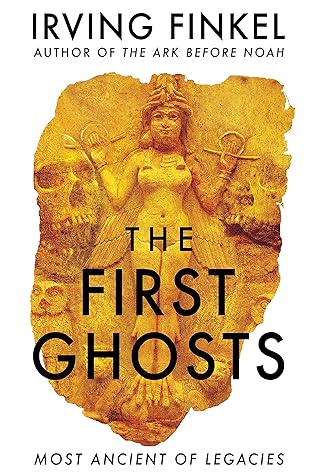More on this book
Community
Kindle Notes & Highlights
The First Ghosts: A rich history of ancient ghosts and ghost stories from the British Museum curator
Read between
August 13 - August 17, 2025
When Jesus walked on the water, however, we are presented with the clearest evidence (respectfully emphasised below) that, nevertheless, everyday belief in ghosts was instinctive, uninhibited and uncontrollable:
But when they saw him walking on the sea, they thought it was a ghost and cried out, for they all saw him and were terrified.
the disciples who were present on that occasion just thought they had seen a ghost.
The dead had to be ferried across the Ḫubur to reach their destination by Humuṭ-tabal, acknowledged as Netherworld Boatman by Prince Kummaya in Chapter 10. The
cuneiform signs used to spell them, and classroom exposition in or around the sixth century bc attained a very high level of textual exegesis; a skilful scholar with traditional texts at his fingertips could prove black to be white to everyone’s satisfaction through the ingenious manipulation of signs and their usages.
The technique involved taking the four cuneiform signs used to write the word ‘baked brick’ and reinterpreting them using several philological tricks to produce two quite new interpretations beyond the literal meaning:
This, the first ghost system that we can document in history, sets the stage in many ways for what came later. Central is the conception that ghosts tend to be restless due to unhappiness, returning to a scene of their former life and seeking closure for injustice, cruelty or violence.
One feature that often surfaces today is the truly ancient idea that ghosts return to the spot where once they lived, or where they had come to a premature end. They still are, it seems, unhappy or unable to rest, tied somehow to the ‘scene of the crime’ in an effort to assuage malaise or seek closure on injustice. This broad ‘explanation’ recurs so regularly in such widely differing contexts that it could be seen as a central component of the whole modern ghost tradition. What fascinates me is the overlap with the ancient Babylonian view at the beginning of it all.
Disbelievers wave away the subject peremptorily with, I just don’t believe a word of it and I never will and there is no point in talking to me about it. For the Disbeliever, anyone who says they saw a ghost therefore must be, Lying Inventing
But to dismiss all anecdotes of this kind outright as lying, invention, delusion and so forth – widely spread as they are over millennia and continents – requires one or other of the following two assumptions:
This blueprint has been everywhere impressed on people’s minds for at least five millennia of time, so that everyone who has ever thought that they have seen a ghost has been deluded in the same way.
Group A all try to make Group B believe that ghosts exist and
My personal conclusion, lounging against this colourful tapestry, is that most, possibly even all human beings everywhere really, truly (as they used to say in books) believe in ghosts.
The conviction that some part of a human being triumphs over annihilation by death and the dissolution of the body is intrinsic to the species, hard-wired at the deepest level from the start, and inextricable. If some part exists and survives, why should it not, sometimes, be visible? The inevitable corollary of the survival of the spirit is the existence of the ghost. It
life resource was finite and that it circled eternally. For one individual to be born, another had to die. It is an idea of great power and effect for us today, and a source of unexpected comfort.
incantations; at that early stage it is not sure in several cases whether the sign represents ghost, GEDIM or demon, UDUG. In
the third millennium bc one sign was probably sometimes used for both.
The later emergence of two distinct forms results from the need to avoid ambiguity in magical texts: nobody wanted to confuse ghosts and demons for a ...
This highlight has been truncated due to consecutive passage length restrictions.


